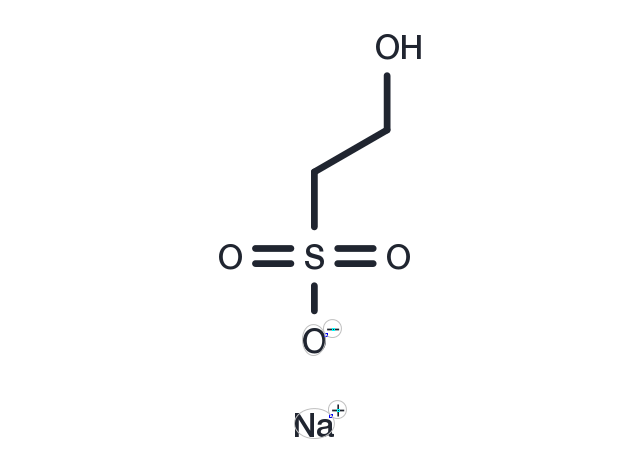Powder: -20°C for 3 years | In solvent: -80°C for 1 year


Isethionic acid sodium salt (Sodium isethionate) is an organosulfur compound containing a short chain alkane sulfonate linked to a hydroxyl group. Mammals are able to endogenously synthesize Isethionic acid sodium salt via taurine through a possible enzymatic deamination process. Isethionic acid sodium salt can be found in both human plasma and urine. Higher plasma levels of Isethionic acid sodium salt have been shown to be protective against type 2 diabetes.

| Pack Size | Availability | Price/USD | Quantity |
|---|---|---|---|
| 500 mg | In stock | $ 41.00 | |
| 1 g | In stock | $ 66.00 |


| Description | Isethionic acid sodium salt (Sodium isethionate) is an organosulfur compound containing a short chain alkane sulfonate linked to a hydroxyl group. Mammals are able to endogenously synthesize Isethionic acid sodium salt via taurine through a possible enzymatic deamination process. Isethionic acid sodium salt can be found in both human plasma and urine. Higher plasma levels of Isethionic acid sodium salt have been shown to be protective against type 2 diabetes. |
| Synonyms | Sodium isethionate |
| Molecular Weight | 148.11 |
| Formula | C2H5NaO4S |
| CAS No. | 1562-00-1 |
Powder: -20°C for 3 years | In solvent: -80°C for 1 year
DMSO: 200 mM
You can also refer to dose conversion for different animals. More
bottom
Please see Inhibitor Handling Instructions for more frequently ask questions. Topics include: how to prepare stock solutions, how to store products, and cautions on cell-based assays & animal experiments, etc.
Isethionic acid sodium salt 1562-00-1 Metabolism Others Endogenous Metabolite Inhibitor Isethionic acid Sodium isethionate Sodium 2-hydroxyethanesulfonate Isethionic acid sodium inhibit inhibitor
